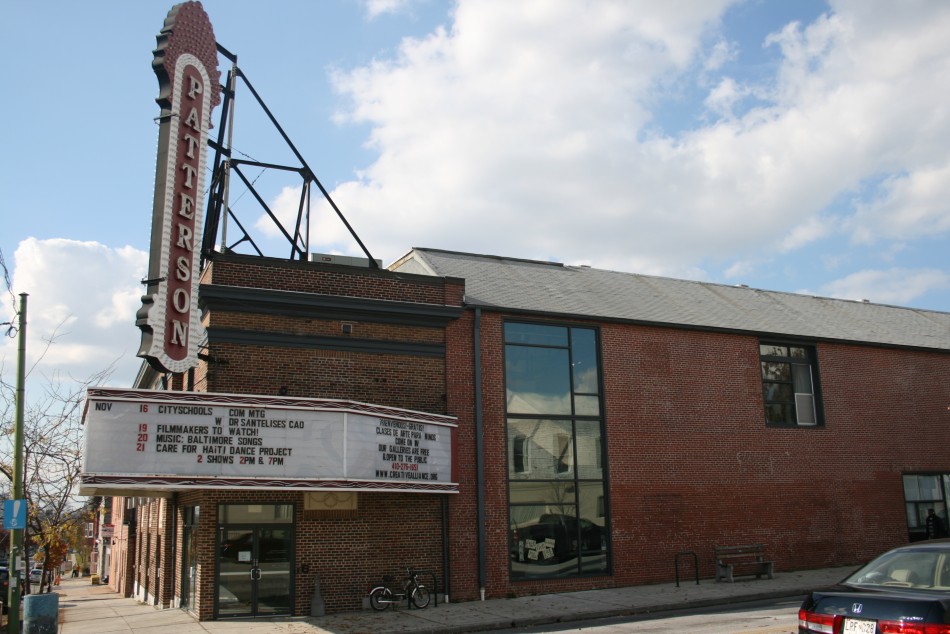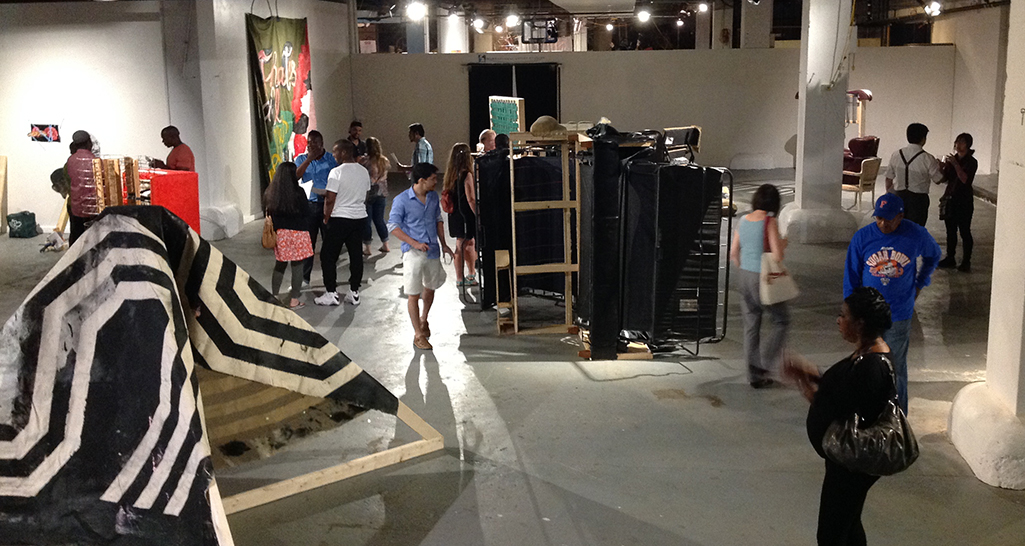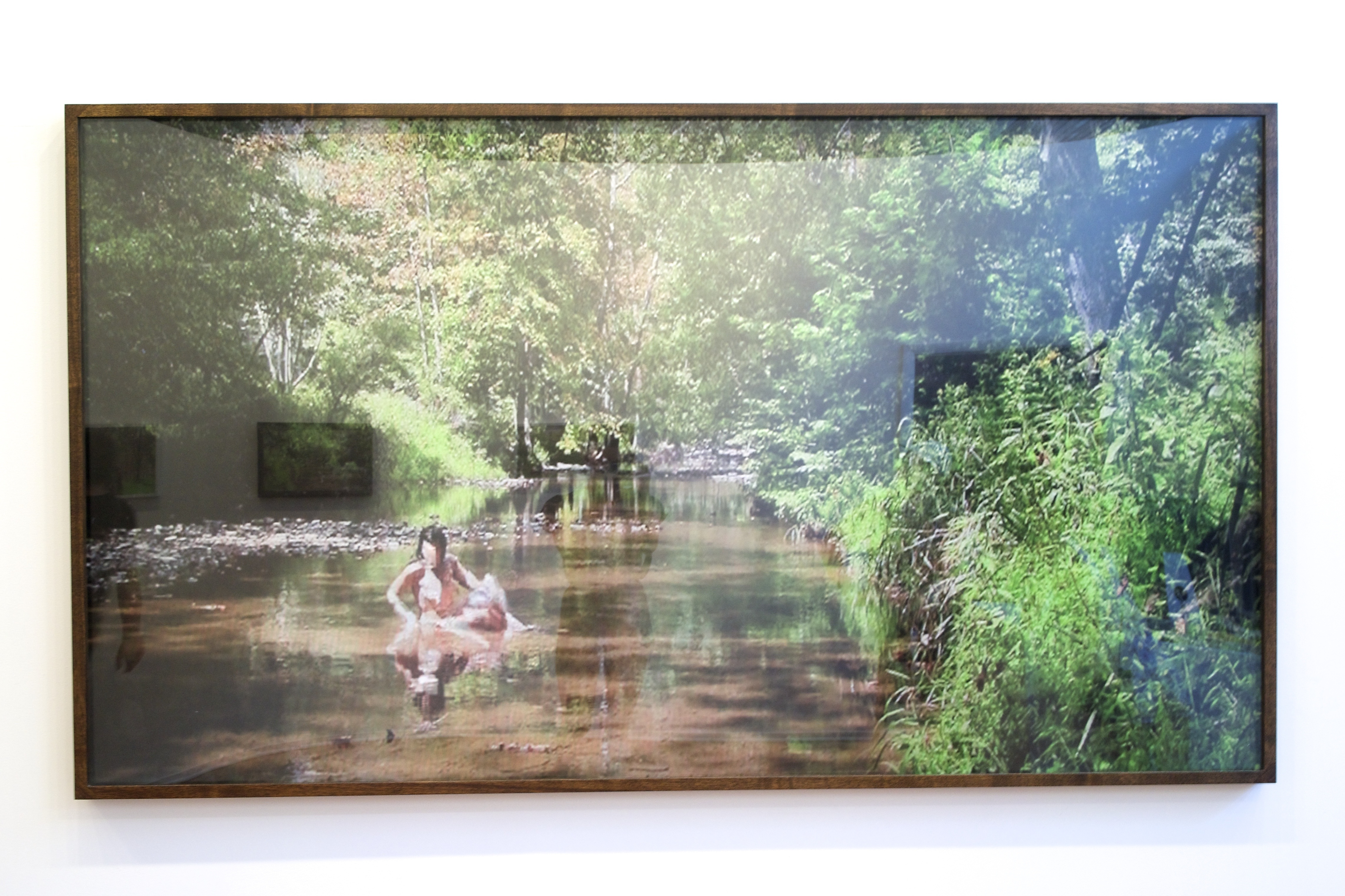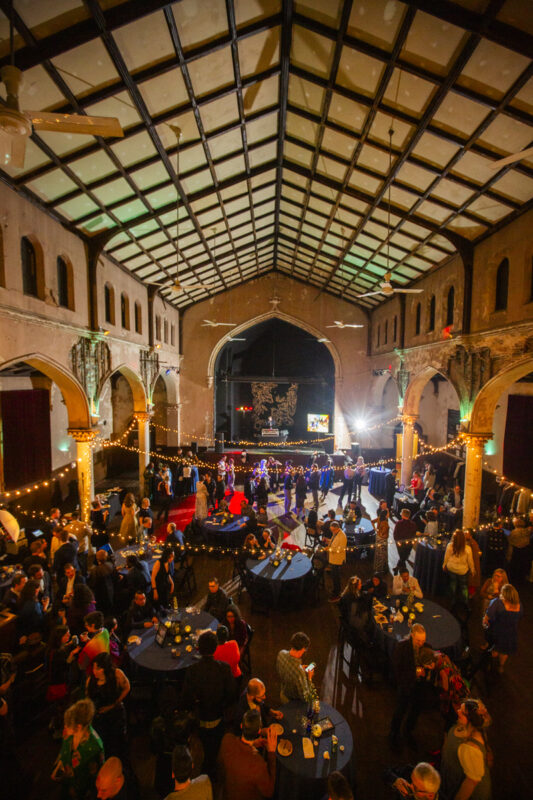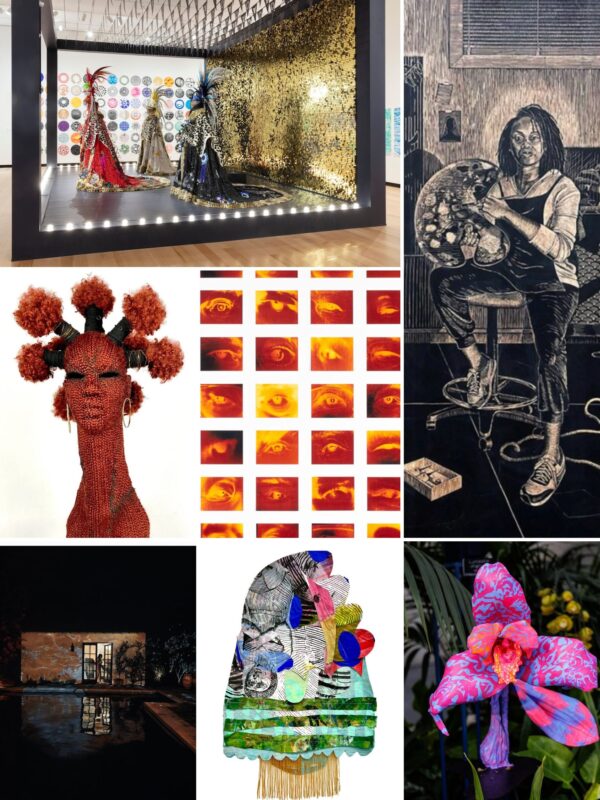Michael Farley reviews Lexie Mountain’s REAL TREE at AMEX Terrault Contemporary
In mathematics, the term “real tree” describes a geodesic metric space. In pop culture, REALTREE™ is a type of “realistic” camouflage print worn by Marine snipers. The latter has exploded in popularity among the “Duck Dynasty” set—gracing everything from Walmart iPhone cases to prom dress sateen at Joann Fabrics. The print has been appropriated from its Red-State-box-store roots to ironic use in Blue State counter culture; popping up in art school sculptures and noise musician wardrobes (just last weekend, I sold a ratty pair of second-hand Realtree overalls to a trendy boutique in Bushwick for $17, assuming they will retail for at least double that price).
Appreciating this kind of triple-entendre is as good a point of entry as any into the meandering oeuvre of Lexie Mountain—in which the esoteric and vernacular are used interchangeably, the idiosyncratic and the cliché share the spotlight, and an earnest sort of rural sensibility dialogues with urban criticality and internet-native humor. In the interest of full disclosure, I should mention that Lexie is a close friend and that we graduated together this year from UMBC’s Imaging Media and Digital Arts MFA program. Most of the pieces in REAL TREE were produced over the course of that three year program, so I have a familiarity with the work and Mountain’s occasionally cryptic thought process—which, like a mathematical real tree, spans seemingly disparate points to form a multifaceted arc—connecting x to y while describing the depth of the connection as much as the distance between beginning and end coordinates.

Backstory adds another facet to all the work in REAL TREE, but is most crucial to appreciating Christina’s World World. Inspired by the famed Andrew Wyeth painting (a coffee-table book reproduction of which always disturbed Mountain as a child), it is the end product of more than a year of exhaustive research about Andrew Wyeth and Anna Christina Olson (the subject of the painting, who had been partially paralyzed by polio). Mountain had a videographer document her pilgrimage to MOMA to see the original painting for the first time. Christina’s World World is a still from that video—depicting Mountain crawling towards the painting in Christina’s pose—that was sent to an online company that turns digital images into “paintings” and prints them on canvas.
As a stand-alone art object the ochre, borderline kitschy art-historical-piece-within-a-digital-piece could be seen as an exceptionally well-executed example in the growing litany of punny “post-internet” gags (see Hrag Vartanian’s coverage of recent 4chan antics). But in the context of Mountain’s work, which has recently explored the agency of paintings’ subjects—investigating the aesthetic commodification of women, lobsters, and nature—the gesture feels more empathetic than flippant. Mountain is earnestly trying to imagine what it must have been like for Christina on that cold New England hillside as much as she is confronting the “authenticity” of the Wyeth original—a painting whose derivations had haunted her since childhood.
In Location Location Location—a video loop installed in a black-box theater adjacent to the “painting”—Mountain intercuts video footage from a trip to Christina Olson’s home with clips of other pastoral landscapes. There’s something slightly off about the landscapes; the footage of the hills surrounding the Olson house feels cold and uninviting. The saturation and temperature give the cinematography a strangely painterly quality. When the video cuts to other bucolic scenes—such as a path through a forest—the image resolution degrades, becomes warmer, and seems to buffer like streaming webcam footage or a file that has been transcoded one-time-too-many from format to format.
These loss of detail in these clips successively evokes various nineteenth century painting genres, from sublime landscapes to pointillist pixilation to impressionistic treatment of light. The pleasant “softness” of these moments is at times shattered by jarring Final Cut effects that break the image into flashing rectangles, precluding any of the suspension of disbelief that sublime landscape paintings strove to inspire. I’m typically fairly immune to the strategy of deliberate distraction in video art—the editing antics popularized by Ryan Trecartin have become somewhat of a lingua franca for video artists in my generation—but here the familiar Final Cut effects caught me off guard. They present an obstacle to entering the dreamy forest, rather than a component of it. The idea of a moving image functioning like a landscape painting (someone in the black box remarked “I want this hanging in my living room”) is evocative of Andy Warhol’s seminal film Empire, which consists solely of a single eight-hour take of the Empire State building. Mountain’s embrace of the instability of the video codec could read as a twenty-first century update of Warhol’s desire to “show the most scratches you can on the film or all the dirt you can get on the film. Or zoom badly, where you zoom and miss the most important thing and your camera jiggles so that everybody knows you’re watching a film.”

Considered through this lens (no pun intended) the video reads less like a deliberately authored art object and more like an index of the processes used to create the body of work in REAL TREE. In addition to Christina’s World World and Location Location Location, there are seven framed prints in the show, each of them a “painterly” video still, most harvested from the same source footage as the forest scenes in the loop. The dialog between video and painting, and the attempt to treat a digital artwork as an object that contains artifacts of its creation—“brushstrokes” if you will—raises some interesting issues about both contemporary and art-historical image creation. Mountain appears in many of the stills, usually pixelated or obscured beyond recognition. There’s an obvious association with the history of painters (usually male) authoring representations of female models. More interestingly, however, these images seem to float somewhere between “self-portrait” and “selfie.” They reference the webcam as much as the painting—two media that undoubtedly conjure associations with the male gaze—but in doing so also raise ontological questions about contemporary image production. A nineteenth century painter authoring either a nude or self-portrait had an understanding (and to a degree, complete control) of their materials. A self-portrait was as much a record of a painter’s mark-making as it was his visage. The application of pigments suspended in medium to a gessoed linen or canvas surface is a technology that—despite commanding a degree of respect and mystique—is actually fairly easy to understand. Even early photographers and filmmakers necessarily had a basic understanding of the chemistry behind emulsion when authoring an image.
Digital images are now produced constantly, and most of us have no idea how. Despite the democratic proliferation of image-making in recent decades, the processes of converting light to data and back again remains a somewhat esoteric wonder. After three years in grad school studying digital imaging, I couldn’t begin to explain how JPEGS or video files come to exist. Mountain’s work hints at the mystery (and fragility) of that process. The glitch is treated as an artifact with as much aura as a gestural brushstroke. Situating herself as both author and subject of these images—all while referencing art history—Mountain presents an interesting question: who has more agency over their representation? The consenting model who poses nude for a painting by a man? Or the consenting webcam model who poses nude for a passive device whose internal operations are utterly inscrutable?

There’s a certain anxiety over authorship that pervades the exhibition, perhaps most evident in the titular print Real Tree. Here we see Mountain standing alone in the forest. She’s wearing a camouflage jacket, but the garment has been highlighted with splotches of fluorescent paint—rendering its function for disguise comically impotent. The still seems to be captured between video frames, with Mountain’s disembodied hands partially obscuring her face and parts of the landscape bleeding into her body in pixelated chunks. The image hints at conflicting desires for visibility and invisibility. It appears as if the artist wants to assert her presence, but needs a veil between herself and the viewer. The in-between still is the perfect medium for the work—it’s an image that captures Mountain between two roles: the artist proudly posing in front of her work, and the subject attempting to avoid scrutiny. The intervening “hand” of technology performs this function in all of the work in the show—whatever tableaux the artist stages is co-authored by an element of chance; the ghost in the machine translates intent or aesthetic agency on her behalf.
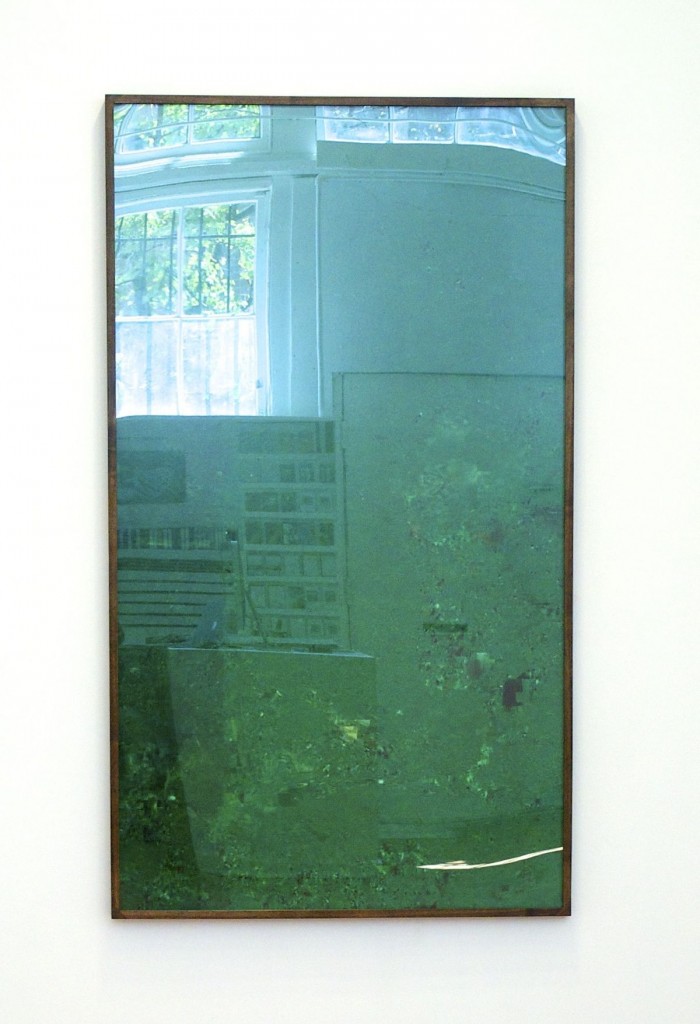
“The screen” is a recurring motif in REAL TREE—even the way the prints are framed presents and obstruction; there’s always a harsh glare between the soft, inviting stills and the viewer. It’s complimentary to some of the pieces and forces one to physically adjust oneself to see the work. The act of viewing becomes one of complicity when you see your reflection looking at the figures behind the glass. This only really bothered me when trying to see Mound Transfer Disappearance. The pixelated green field is the most “abstract” work in the show, and it loses some of its nuance and almost all legibility while vying for attention with the gallery’s reflection. Overall, the experience is akin to trying to watch a slow-buffering stream of a pirated movie on a laptop screen on a sunny afternoon.

My favorite prints in the show, Bather Study #1, Bather Study #2, and Mirrorless, depict Mountain skinny-dipping in a stream. Again, these video stills are degraded by file-type conversion or playback at a different frame rate. Here this effect engenders an impression of painting most convincingly. The stills (which were created somewhat by happy accident) bear a striking resemblance to Renoir’s pastoral nudes and Manet’s famous Le Déjeuner sur l’herbe—a coincidence that partially inspired Mountain’s research into representation in nineteenth century paintings. They’re incredibly beautiful and make sense in their context.
I couldn’t help but think of this fledgling gallery, AMEX Contemporary Terrault Contemporary* as Baltimore’s answer to the Salon of Paris in the 1800s. With its own storefront entrance to the street and a backdoor to the rest of the Copycat building, the space flirts with both the establishment of commercial galleries and the city’s avant-garde. Where one might see pricy artist monographs and catalogues at similarly professional-looking galleries, Terrault offers a selection of local zines and tapes from Baltimore’s experimental music scene. I can’t remember the last time I saw little red dots indicating an artwork had already sold at an opening reception in Baltimore, let alone on notoriously hard-to-sell digital pieces. But based on their appearance here, I’d say Terrault is off to a great start. And Lexie Mountain, like so many painters showing at the Salon, has mastered referencing (and challenging) her predecessors with new techniques and a distinctively-Lexie sensibility.
*The gallery, located at 1515 Guilford Avenue on the bottom floor of The Copycat Building, originally opened as AMEX Contemporary with Lexie Mountain’s show. The name was changed to Terrault Contemporary after founder Brooks Kossover reportedly received a cease-and-desist letter from “American Express Trademark Enforcement” on behalf of the credit card company. Let’s hope Lexie doesn’t receive a similar email from the makers of REALTREE™.
REAL TREE closes August 28th with an artist talk by Lexie Mountain during the ALLOVERSTREET gallery crawl. Until then, Terrault Contemporary is open Tuesdays-Saturdays from noon to 5pm.
Author Michael Farley was born at John’s Hokpins Hospital, attended MICA for a BFA in Interdisciplinary Sculptural Studies, and recently received an MFA in Imaging Media and Digital Arts from UMBC. He has a complicated relationship with institutional critique. Although he went to digital art school, he has no website, but did switch to electronic cigarettes.
